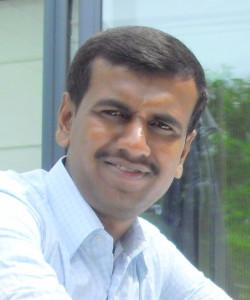 In India, tuberculosis (TB) is still a major public health problem. According to World Health Organization (WHO) estimates in 2013, more than 2.6 million people in India are living with TB. India follows the directly observed treatment, short course (DOTS) regime recommended by the WHO at its public health facilities and this treatment is offered free of cost. However, it is believed that not many people come forward to get treatment at these public facilities for TB.
In India, tuberculosis (TB) is still a major public health problem. According to World Health Organization (WHO) estimates in 2013, more than 2.6 million people in India are living with TB. India follows the directly observed treatment, short course (DOTS) regime recommended by the WHO at its public health facilities and this treatment is offered free of cost. However, it is believed that not many people come forward to get treatment at these public facilities for TB.
As part of my fieldwork on a research project on access to medicines, I got the opportunity to interact with a few patients with TB and healthcare staff from different primary care centres in one of the southern states of India. During these interactions, I learned that TB patients in rural India still face social stigma, which prevents them from accessing public health facilities, and that they fear sharing the diagnosis even with their friends or relatives.
One such patient I came across was a man who’d been diagnosed with TB. Once he was started on treatment, the primary health centre (PHC) staff advised him to bring his wife in for screening, where she tested negative for TB. After this his wife left him, saying that she didn’t want to stay with him as he is affected by TB.
This was not an isolated incident. I heard similar stories in other PHCs where patients spoke about their apprehensions of sharing their diagnosis with friends and neighbours.
While interacting with the health workers, they also reported that stigma is very high in rural areas and that people usually hesitate to disclose their illness to anyone. One health worker said:
“Here people are ready to die without taking medicine, because they won’t share with neighbours their TB disease. Even when we visit their houses, we have to make sure it’s confidential or else patients just refuse the treatment.”
Another important issue highlighted by the health workers was that, in line with the official mandate of the DOTS programme, they can only start dispensing TB drugs after physically verifying the address of a patient. While this procedure is aimed at ensuring continuity of care, it is also a potential barrier to those with TB seeking treatment. In many cases, patients hesitate to share their details with health staff, fearing the stigma that could follow, and this makes them drop out of treatment or seek care at a private facility, which results in high out of pocket expenditure.
In a country that’s had a national TB control programme for more than 50 years, this is a serious concern. We need to reconsider the information, education, and communication (IEC) strategies used under our Revised National Tuberculosis Control Programme to create awareness about TB and its treatment. Focused IEC activities can play a key part in reducing the stigma and burden of a disease, the best example of which is in the case of HIV in India. The media can also have a major role in increasing awareness about TB.
Finally, healthcare workers should be better trained in counselling both patients and their relatives, which will also help in reducing the stigma they face. All of these efforts need to be concerted and consolidated to be able to tackle the stigma and discrimination TB patients face in India.
CM Munegowda works as a research officer at the Institute of Public Health, Bangalore, India.
Competing interests: I declare that I have read and understood BMJ policy on declaration of interests and I have no relevant interests to declare.
